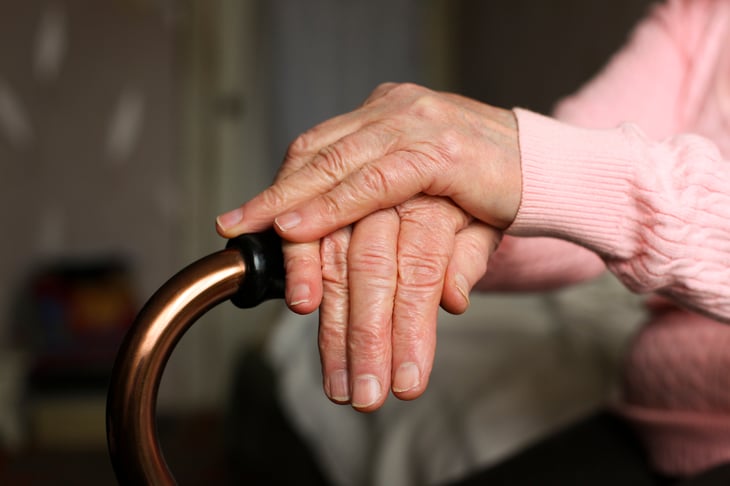
Americans’ spending fell by 2.7% in 2020. U.S. households spent an average of $61,334 — compared with $63,036 the year before, according to new federal data.
That spending drop came although our earnings were 1.8% higher (before tax), on average, and inflation rose 1.2%.
You can probably guess, from your own experience, one big reason why spending fell: the COVID-19 pandemic.
“Stay-at-home orders affected expenditures for retail outlets, entertainment venues, and even transportation providers, as those working from home ceased commuting,” according to the federal Bureau of Labor Statistics.
Still, you might be surprised at some of the other things Americans spent less on.
Here are, based on the BLS’ latest consumer spending data, some spending categories in which the fall-off in spending was greatest.
Education

Average household spending:
Spending on education fell by nearly 12% in that first calendar year of the pandemic. This category includes spending on textbooks, fees, tuition, equipment and supplies for all educational levels, from nursery schools to universities.
Medical services

Average household spending:
- 2019: $984
- 2020: $864 (12.2% decrease)
Spending in this area includes hospital rooms and hospital services, and services performed by physicians and other professionals — for example, dental care, eye care, lab tests and X-rays. Medical care delivered at retirement communities and convalescent or nursing homes also is included.
Of course, spending varies by age. Households led by someone age 65 or older tend to spend more on medical costs than younger households, as we detail in “Here’s How Much Retiree Households Spend in a Year.”
Medical supplies

Average household spending:
- 2019: $194
- 2020: $170 (12.4% decrease)
The category of medical supplies is a big bucket that entails such products as dressings, bandages and topical treatments, antiseptics, first aid kits, syringes, contraceptives, ice bags, heating pads, sun lamps and thermometers. Also in this bucket of expenses: medical “appliances” (like crutches, braces, canes, walkers, hearing aids and eyeglasses) and rental and repair of medical equipment.
Alcoholic beverages

Average household spending:
- 2019: $579
- 2020: $478 (17.4% decrease)
Household spending on alcoholic beverages overall fell 17.4% in 2020. This spending drop was led, the BLS says, by a 43.9% decline in money spent on alcohol consumed away from home specifically.
At the same time, spending on alcohol consumed at home rose, by 4.5%.
Personal care

Average household spending:
- 2019: $786
- 2020: $646 (17.8% decrease)
Personal care includes services and products related to, for example, hair care, dental care, shaving and bathing.
For help bringing down your own personal care expenses, you might want to check out “How I Save $96 on a Haircut and Coloring.”
Clothing and clothing services

Average household spending:
- 2019: $1,883
- 2020: $1,434 (23.8% decrease)
Clothing and related services, such as alterations and dry cleaning, is one of the bigger expenditure categories, along with food, housing, health care and transportation.
In 2020, the individual line items in this category that saw the steepest drops were men’s and boys’ clothing (27.1% decrease) and footwear (25.1% decrease).
Gasoline, diesel fuel and motor oil

Average household spending:
- 2019: $2,094
- 2020: $1,568 (25.1% decrease)
In early 2021, data analytics company Kayrros analyzed numbers on human mobility and fuel consumption in the U.S. during the pandemic. Kayrros reported “a sharp decline of about 40% in the total commute mileage in March 2020 following the initial lockdown measures.” Mileage levels had nearly fully recovered by early 2021.
Eating out

Average household spending:
- 2019: $3,526
- 2020: $2,375 (32.6% decrease)
The category encompasses money spent on meals and snacks outside the home, including nonalcoholic drinks and tips. This includes spending on fast food, takeout and delivery as well as at buffets, cafeterias, concession counters, full-service restaurants, vending machines and mobile food vendors.
As you might expect in 2020, spending on food eaten at home rose, by 6.4%.
Fees and admissions

Average household spending:
- 2019: $880
- 2020: $425 (51.7% decrease)
Spending plummeted for this category, which includes fees and admissions for sporting events, movies, concerts and plays, as well as membership fees for health, swimming, tennis and country clubs. It also includes fees collected by social, fraternal and recreational organizations, and costs for movie rentals and recreational lessons and instruction.
Public and other transportation

Average household spending:
- 2019: $781
- 2020: $263 (66.3% decrease)
This category includes fares for mass transit, trains, airlines, buses, taxis, boats and even school buses where a fee is charged.




Add a Comment
Our Policy: We welcome relevant and respectful comments in order to foster healthy and informative discussions. All other comments may be removed. Comments with links are automatically held for moderation.